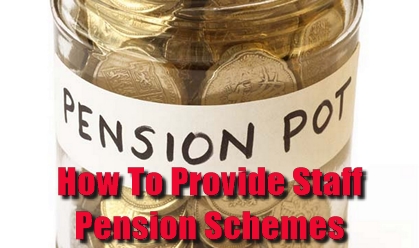From October 2012 new legislation obliged employers to set up pension schemes for some of their employees and ensure that they enrol in those schemes. Whilst for many small businesses, such as pubs, this isn’t high on their list of priorities, you should really start thinking about how this is going to affect your business and what you need to do to comply with the law as part of your financial planning. All employers, not matter how small will have to comply with the new law by 2018, so even if you only employ a single worker you will have to deal with this.
For many publicans this will be an entirely new and bewildering experience and even for those who already have pension schemes in place for their employees there will still be new obligations to meet.
What is a workplace pension scheme and who has to join it?
Put simply it is an arrangement you, as an employer, put in place to provide your staff with a pension income when they retire from work. Anybody who works for you and meets the following criteria must be enrolled in your pension scheme:
- Anyone who you pay the national minimum wage to.
- Anyone working as an apprentice.
- Anyone who earns more than the minimum earnings threshold.
- Any of the above who is aged between 22 and the state pension age and who works for you in the UK.
What will I have to do to comply with the new law?
Firstly you will have to automatically enroll all those members of your staff who are eligible in your pension scheme.
For More Information From Roslyn’s, a leading firm of accountants in the pub sector on Auto Enrolment click here
You will have to provide what is called a “qualifying scheme”, so even if you already have a pension scheme in place you will need to ensure it meets the new requirements. You will then need to register details of your scheme with The Pensions Regulator.
You will have to pay employer contributions for all the eligible members of staff into the scheme; the rate currently set is to at least 3% of their gross pay. Different pay bands and different types of pension schemes may affect how much more you may have to pay in. You will have to make provision for this increase in your payroll costs in your profit and loss account and will have to factor this increased cost into your profit calculation and product pricing.
As an employer you will have to tell all those members of your staff that are eligible to join the scheme that they have automatically been enrolled in the scheme and let them know about their right to opt out of the scheme if they want to. You will need to tell The Pensions Regulator how many of your staff have been automatically enrolled as well.
Now a note of warning, you must not encourage your staff to opt out of your scheme, choose new employees on the basis that they will opt out of your scheme or treat a member of staff unfairly because they do not opt out of your scheme.
Where do I get advice on choosing the right pension scheme for my business and my employees?
As these new arrangements are going to be jointly administered by The Pensions Regulator and the Financial Services Authority (FSA) you will find both organisations are offering advice and guidance on this very complicated matter.
The FSA has a website that gives advice for employers and employees
http://www.moneymadeclear.fsa.gov.uk
as does The Pensions Advisory Service
http://www.pensionsadvisoryservice.org.uk .
To find a pensions provider or a pensions advisor go to IFA Promotion website for an independent financial advice:
Finally the Department for Work and Pensions can give you more information about the reforms to pensions coming into effect:
http://www.dwp.gov.uk/policu/pensions-reforms
For easy to understand information for you and your staff the National Association of Pension Providers has a wealth of support material including their 15 minute film, The Long Weekend, which explains the need for pensions
Continue reading … page 2
